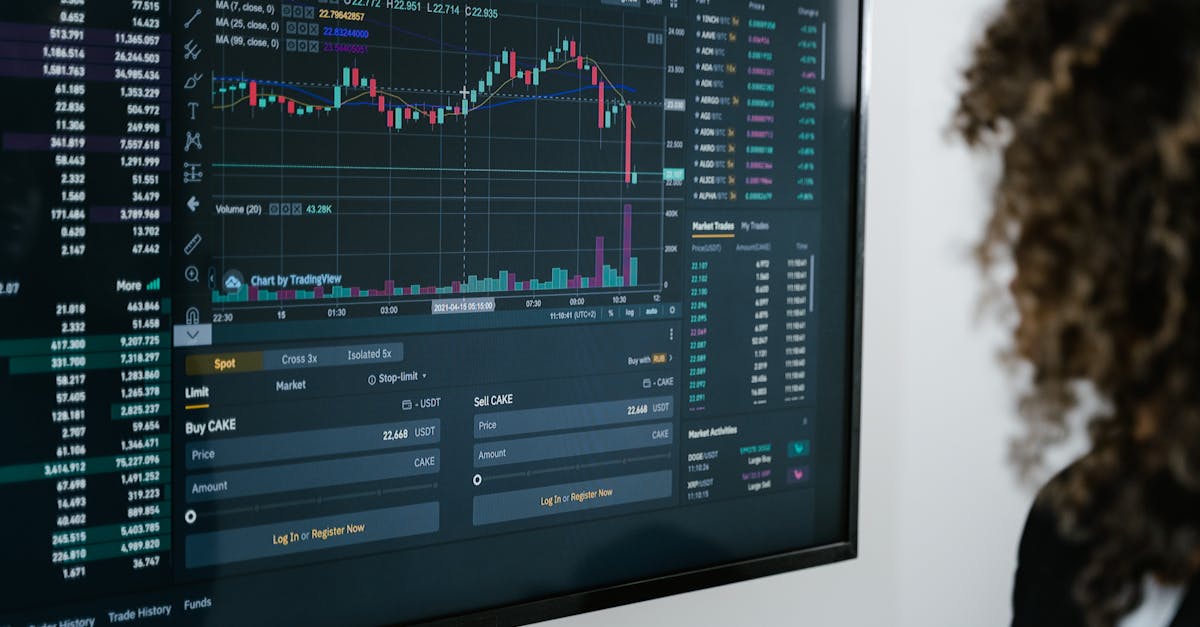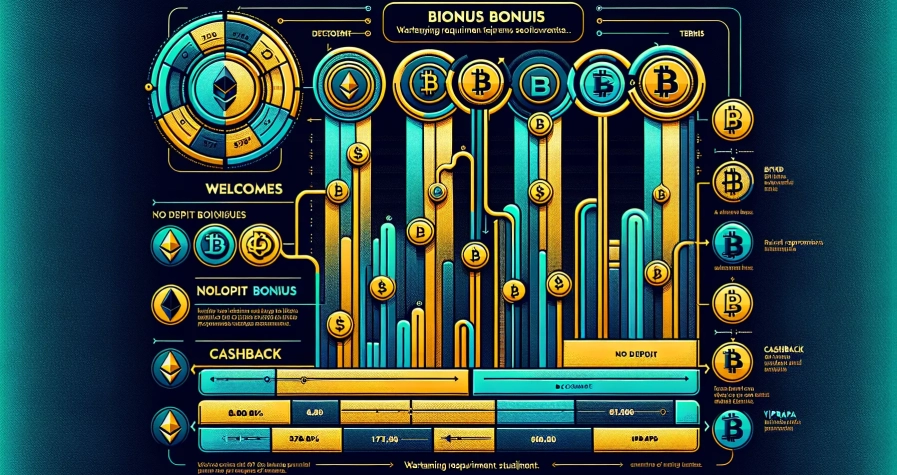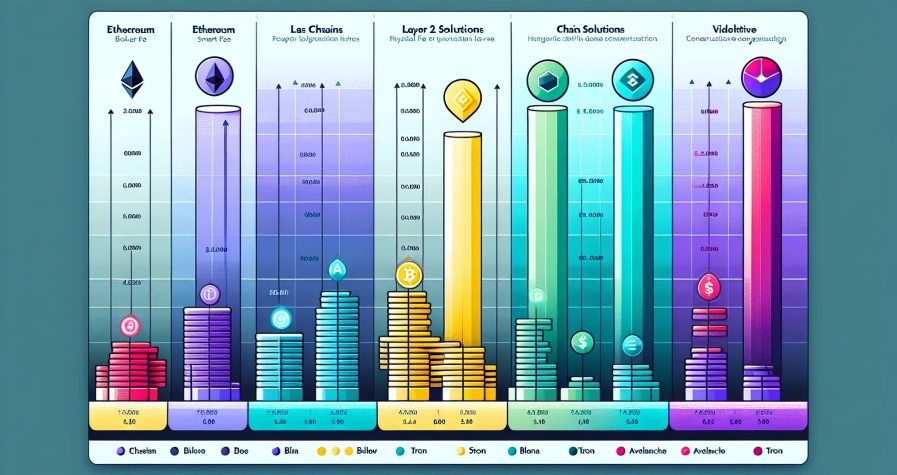You’ve probably heard about Bitcoin’s meteoric rise and wondered if you should jump on the bandwagon. The world’s first cryptocurrency has transformed from an obscure digital experiment into a mainstream investment asset that’s caught the attention of everyone from tech enthusiasts to institutional investors.
Getting started with Bitcoin doesn’t have to be intimidating. While the technology behind it might seem complex, buying your first Bitcoin is actually quite straightforward once you understand the basics. You’ll need to choose a reputable exchange, set up a digital wallet and navigate the verification process.
Whether you’re looking to diversify your investment portfolio or simply curious about this revolutionary digital currency, understanding how to safely purchase Bitcoin is your first step into the world of cryptocurrency. With the right knowledge and precautions, you can confidently make your first Bitcoin purchase and join millions of others who’ve embraced this digital asset.
What Is Bitcoin and Why Should You Consider Buying It?
Bitcoin represents a decentralised digital currency that operates without traditional banking systems or government control. Created in 2009 by the pseudonymous Satoshi Nakamoto, this cryptocurrency uses blockchain technology to record transactions across a network of computers worldwide.
Key characteristics of Bitcoin include:
- Limited supply: Only 21 million bitcoins can ever exist
- Decentralisation: No single authority controls the network
- Transparency: All transactions are publicly recorded on the blockchain
- Borderless transactions: You can send Bitcoin anywhere globally without intermediaries
Bitcoin functions as both a store of value and a medium of exchange. Unlike traditional currencies that central banks can print indefinitely, Bitcoin’s scarcity mimics precious metals like gold, earning it the nickname “digital gold.”
Potential Benefits of Bitcoin Investment
Bitcoin offers several compelling reasons for investment consideration. The cryptocurrency has delivered substantial returns over its lifetime, with early adopters seeing exponential gains despite significant volatility.
Portfolio diversification stands as a primary advantage. Bitcoin operates independently from traditional financial markets, providing a hedge against inflation and economic uncertainty. Major corporations including Tesla, MicroStrategy, and Square have added Bitcoin to their balance sheets as a treasury reserve asset.
Institutional adoption continues accelerating across various sectors:
- Payment processors like PayPal and Square enable Bitcoin transactions
- Traditional banks such as JPMorgan and Goldman Sachs offer cryptocurrency services
- Investment firms provide Bitcoin exchange-traded funds (ETFs) for easier access
- Countries like El Salvador have adopted Bitcoin as legal tender
Protection against currency devaluation represents another significant benefit. When your local currency weakens or faces inflation, Bitcoin can preserve purchasing power across international markets.
Understanding Bitcoin’s Market Characteristics
Bitcoin’s price movements reflect supply and demand dynamics influenced by multiple factors. Market sentiment, regulatory developments, institutional adoption, and macroeconomic conditions all impact valuation.
Volatility characteristics require careful consideration:
| Time Period | Average Daily Volatility | Price Range Example |
|---|---|---|
| Short-term (1-30 days) | 3-5% | £500-£2,000 daily swings |
| Medium-term (1-6 months) | 20-40% | £10,000-£30,000 range |
| Long-term (1+ years) | 50-200% | Multi-thousand pound variations |
This volatility creates both opportunities and risks. Short-term price fluctuations can be dramatic, but Bitcoin has historically trended upward over longer timeframes.
Market maturity continues developing as regulatory frameworks emerge globally. The UK’s Financial Conduct Authority (FCA) now regulates cryptocurrency exchanges, providing increased consumer protection and market stability.
Your understanding of these fundamentals positions you to make informed decisions about Bitcoin investment timing and allocation within your broader investment strategy.
Choosing the Right Bitcoin Exchange or Platform
Selecting the right Bitcoin exchange or platform serves as your gateway to cryptocurrency investing and directly impacts your trading experience. Popular UK platforms like Coinbase and eToro offer beginner-friendly interfaces with robust security features and transparent fee structures.
Centralised Exchanges vs Decentralised Platforms
Centralised exchanges (CEX) operate as intermediaries that manage your transactions and custody your funds. These platforms provide high liquidity for smooth trading execution and support fiat currency deposits through bank transfers or debit cards. You’ll find intuitive interfaces and customer support teams ready to assist with any queries. However, you don’t control your private keys on these platforms, which introduces counterparty risk.
Examples of centralised exchanges include:
- Coinbase – known for regulatory compliance and user-friendly design
- Binance – offers extensive cryptocurrency selection
- Kraken – provides advanced trading features
Decentralised exchanges (DEX) function without central authorities and enable peer-to-peer trading directly between users. You maintain complete control over your private keys and enjoy greater privacy protection. These platforms typically have lower liquidity and slower transaction processing times, making them more challenging for beginners to navigate.
Key Features to Look for in a Bitcoin Exchange
Security measures form the foundation of any reliable Bitcoin exchange. Look for platforms offering two-factor authentication, cold storage of customer funds, and comprehensive insurance policies protecting against potential breaches.
Liquidity levels determine how easily you can buy or sell Bitcoin at market prices. Higher liquidity ensures better price stability and reduces the likelihood of significant price slippage during transactions.
Fiat currency support enables you to deposit and withdraw British pounds through bank transfers or card payments. This feature simplifies the process of converting your traditional currency into Bitcoin.
| Feature | Importance | What to Look For |
|---|---|---|
| Security | Critical | 2FA, cold storage, insurance |
| Liquidity | High | Active trading volume |
| Fiat Support | Essential | GBP deposits/withdrawals |
| User Interface | Important | Simple navigation, clear pricing |
| Fees | Significant | Transparent structure, competitive rates |
| Regulation | Mandatory | FCA compliance for UK users |
User experience encompasses the platform’s interface design and customer support quality. Choose exchanges with clear navigation, transparent pricing displays, and responsive help desk services.
Fee transparency affects your overall investment returns. Compare trading fees, deposit charges, and withdrawal costs across different platforms to find the most cost-effective option for your trading frequency.
Regulatory compliance ensures the platform operates within UK legal frameworks. Verify that your chosen exchange complies with Financial Conduct Authority (FCA) regulations to enhance the safety of your investments.
Setting Up Your Digital Wallet
Setting up a digital wallet represents your first crucial step towards securing your Bitcoin investment. Your digital wallet stores the private keys that give you access to your cryptocurrency holdings.
Types of Bitcoin Wallets
Bitcoin wallets come in four distinct categories, each offering different levels of security and convenience for your digital assets.
Hosted wallets operate through third-party platforms like Coinbase or Kraken that manage your private keys. These platforms provide password recovery options and simplified setup processes, making them ideal for beginners. However, you sacrifice direct control over your Bitcoin since the platform holds your private keys.
Software wallets function as mobile or desktop applications that store your private keys locally on your device. Popular options include Electrum for desktop and Blue Wallet for mobile devices. These wallets offer user-friendly interfaces and convenient access to your Bitcoin, though they become vulnerable to malware if your device gets compromised.
Hardware wallets consist of physical devices like Ledger Nano S or Trezor that store your private keys offline. These devices provide the strongest security against online threats and hacking attempts. The main drawbacks include higher costs (£50-£200) and the responsibility of keeping the physical device safe.
Paper wallets involve printing your private keys and Bitcoin addresses on physical paper. This method offers complete immunity from digital hacking since your keys exist entirely offline. However, paper wallets can easily be lost, damaged by water or fire, or become illegible over time.
| Wallet Type | Security Level | Ease of Use | Cost | Best For |
|---|---|---|---|---|
| Hosted | Medium | Very Easy | Free | Beginners |
| Software | Medium | Easy | Free | Regular transactions |
| Hardware | High | Moderate | £50-£200 | Long-term storage |
| Paper | High | Difficult | Free | Cold storage |
Security Best Practices for Wallet Setup
Implementing robust security measures protects your Bitcoin investment from theft and loss. Start by creating a backup of your wallet immediately after setup and store your recovery phrase in multiple secure locations away from your computer.
Password protection requires using unique, complex passwords containing at least 12 characters with numbers, symbols, and mixed-case letters. Enable two-factor authentication (2FA) on all your exchange and wallet accounts to add an extra security layer. Avoid using SMS-based 2FA and opt for authenticator apps like Google Authenticator or Authy instead.
Recovery phrase storage involves writing down your 12-24 word recovery phrase on paper and storing copies in separate secure locations. Never store this phrase digitally or share it with anyone, as possession of these words grants complete access to your Bitcoin. Consider using steel backup plates for fire and water resistance if storing significant amounts.
Device security encompasses keeping your wallet software updated, using antivirus protection, and avoiding public Wi-Fi when accessing your wallets. Download wallet applications only from official sources and verify app authenticity through developer signatures or official website links.
Research and verification means choosing wallet providers with strong security track records, regulatory compliance, and positive user reviews. Verify that hosted wallet providers maintain proper licensing with the Financial Conduct Authority (FCA) and implement industry-standard security protocols like cold storage for customer funds.
Step-by-Step Guide to Making Your First Bitcoin Purchase
Making your first Bitcoin purchase involves completing identity verification and executing your trade through your chosen exchange. These essential steps ensure regulatory compliance and secure access to cryptocurrency markets.
Verifying Your Identity and Account
Complete the Know Your Customer (KYC) verification process by uploading your government-issued identification documents. Submit a valid passport or driver’s licence alongside proof of address documentation such as utility bills or bank statements dated within the last 90 days.
Upload a clear selfie or complete face verification through your exchange’s mobile app if required. Most FCA-registered platforms like eToro, Coinbase and Kraken use automated systems that process verification within minutes to several hours.
Check your email for confirmation messages and respond promptly to any additional document requests. Your trading limits remain restricted until verification completes, preventing full access to Bitcoin purchasing features.
Monitor your account status through the platform’s dashboard where verification progress appears in real-time. Contact customer support if verification exceeds 24 hours or if document rejection occurs requiring resubmission.
Funding Your Account and Placing an Order
Deposit British pounds into your verified exchange account using supported payment methods including bank transfers, debit cards or e-wallets. Bank transfers typically process within 1-3 business days whilst card payments appear instantly with higher fees ranging from 1.5% to 4%.
Verify your bank allows cryptocurrency exchange transactions since some UK banks including Barclays and NatWest have implemented restrictions. Contact your bank beforehand to prevent declined transactions or account limitations.
Navigate to the Bitcoin trading section once funds appear in your account balance. Specify your purchase amount in GBP or Bitcoin fractions since one Bitcoin costs approximately £35,000-45,000 in 2025.
Execute a market order to buy Bitcoin immediately at current prices or use limit orders to purchase at specific price points. Review transaction fees, spread costs and final amounts before confirming your order.
| Payment Method | Processing Time | Typical Fees | Daily Limits |
|---|---|---|---|
| Bank Transfer | 1-3 days | 0-0.5% | £10,000-50,000 |
| Debit Card | Instant | 1.5-4% | £500-2,000 |
| Credit Card | Instant | 3-5% | £200-1,000 |
| E-wallet | Minutes | 1-3% | £1,000-5,000 |
Transfer your Bitcoin to a private wallet immediately after purchase or leave it on the exchange for future trading convenience. Private wallets provide enhanced security control whilst exchange storage offers easier access for frequent transactions.
Understanding Bitcoin Storage and Security
Once you’ve purchased your Bitcoin, securing it becomes your primary responsibility. Understanding the different storage methods and implementing proper security measures protects your investment from potential threats.
Hot Wallets vs Cold Storage
Hot wallets connect to the internet and provide convenient access for frequent Bitcoin transactions. These software-based wallets offer quick transfers and easy portfolio management but expose your Bitcoin to online security risks including hacking attempts and malware attacks.
Cold storage keeps your Bitcoin completely offline through hardware wallets or paper wallets. This method provides maximum security against cyber threats since hackers can’t access offline devices through internet connections. Cold storage suits long-term investors who prioritise security over convenience.
| Storage Method | Security Level | Convenience | Best For |
|---|---|---|---|
| Hot Wallets | Medium | High | Daily transactions |
| Cold Storage | Very High | Low | Long-term holding |
Many Bitcoin holders adopt a hybrid approach by keeping small amounts in hot wallets for regular use whilst storing the majority of their holdings in cold storage. Multi-signature wallets add extra security layers by requiring multiple private keys to authorise transactions.
Protecting Your Private Keys
Never share your private keys with anyone or store them in cloud services where hackers might access them. Your private keys control your Bitcoin completely and sharing them equals giving away your funds.
Enable two-factor authentication (2FA) on all wallet applications and exchange accounts. This security measure requires a secondary verification method beyond your password when accessing your Bitcoin.
Create multiple backups of your hardware wallets and store private keys or seed phrases in several secure offline locations. Physical damage or loss of a single storage location won’t compromise your Bitcoin access when you maintain multiple backups.
Choose reputable wallet providers with proven security track records and positive user reviews. Research wallet companies’ histories including any past security breaches before entrusting them with your Bitcoin storage.
Stay updated on security practices by following cryptocurrency security news and implementing new protective measures as they emerge. Cyber threats evolve constantly and your security methods must adapt accordingly.
Common Mistakes to Avoid When Starting Out
Lack of Education and Research
Investing without understanding cryptocurrencies and blockchain technology represents one of the most significant errors beginners make. You must learn from reliable sources and established communities before committing funds to Bitcoin investments. Research the technology behind Bitcoin, understand market dynamics and familiarise yourself with trading terminology. Educational platforms like Bitcoin forums, reputable cryptocurrency news sites and official exchange resources provide valuable insights for informed decision-making.
Emotional Investing and FOMO
Buying Bitcoin solely due to hype or fear of missing out leads to poor investment decisions. You shouldn’t make purchases based on social media buzz or sudden price surges without proper analysis. Define clear investment goals and make data-driven decisions rather than emotional ones. Market volatility creates opportunities for both gains and losses, making rational analysis crucial for long-term success.
Neglecting Wallet Security
Leaving Bitcoin on exchanges long-term exposes your investment to unnecessary risks. You must transfer your Bitcoin to secure hardware or software wallets after purchase. Enable two-factor authentication (2FA) on all accounts and create multiple backups of your wallet information. Exchange hacks and technical failures can result in permanent loss of funds, making personal wallet storage essential for protecting your investment.
Using Unsecured or Unregulated Exchanges
Trading on unknown or unregulated platforms significantly increases your risk of scams and fund loss. You should only use well-established, regulated platforms that comply with UK Financial Conduct Authority (FCA) requirements. Verify the exchange’s security measures, insurance coverage and regulatory status before creating an account. Reputable exchanges like eToro, Coinbase and Best Wallet offer strong security protocols and regulatory compliance.
Overtrading and Excessive Fees
Frequent buying and selling activities incur high transaction fees and can lead to significant losses. You shouldn’t attempt day trading without extensive experience and risk management strategies. Each transaction carries costs that accumulate over time, potentially eroding your investment returns. Focus on long-term holding strategies rather than short-term speculation to minimise fees and maximise potential gains.
Falling for Investment Scams
Cryptocurrency scams target inexperienced investors through promises of guaranteed returns or exclusive opportunities. You must remain sceptical of offers that seem too good to be true and avoid unverified crypto projects. Common scams include Ponzi schemes, fake exchanges and phishing attempts designed to steal personal information. Research any investment opportunity thoroughly and verify credentials before committing funds.
Poor Risk Management
Investing more money than you can afford to lose represents a fundamental error in cryptocurrency investing. You should begin with 1-5% of your portfolio and increase allocation as you gain confidence and experience. Bitcoin’s volatility can result in significant short-term losses, making proper risk assessment essential. Remember that you can purchase fractions of Bitcoin rather than whole coins, allowing for smaller initial investments that match your risk tolerance.
Managing Your Bitcoin Investment Wisely
Successfully managing your Bitcoin investment requires strategic planning and disciplined execution. Your investment approach determines long-term success in the volatile cryptocurrency market.
Dollar-Cost Averaging Strategy
Dollar-Cost Averaging (DCA) involves investing a fixed amount regularly regardless of Bitcoin’s current price. This strategy reduces the impact of market volatility by spreading purchases across different price points over time.
The DCA approach offers three significant advantages:
- Risk mitigation – Regular purchases eliminate the pressure of timing the market perfectly
- Cost averaging – Your average purchase price smooths out over multiple transactions
- Accumulation benefits – You acquire more Bitcoin during price dips and less during peaks
You can implement DCA by setting up automatic purchases weekly, fortnightly, or monthly through your chosen exchange. For example, investing £100 monthly over 12 months provides exposure to various price levels rather than risking a single large purchase at an unfavourable price.
Many exchanges including Coinbase and eToro offer automated DCA features that execute purchases automatically. This eliminates emotional decision-making and ensures consistent investment discipline.
When to Hold vs When to Sell
Your decision to hold or sell Bitcoin depends on market conditions, personal financial circumstances, and investment objectives. Understanding these factors helps you make informed choices rather than emotional reactions.
Hold Bitcoin when:
- Long-term price appreciation remains your primary goal
- Market fundamentals show positive institutional adoption trends
- Your financial situation doesn’t require immediate access to invested funds
- Technical analysis indicates potential upward price momentum
Consider selling when:
- You’ve achieved predetermined profit targets or investment milestones
- Personal financial emergencies require immediate liquidity
- Market analysis suggests significant downward price pressure
- Your risk tolerance has changed due to life circumstances
Monitor key market indicators including institutional investment flows, regulatory developments, and macroeconomic factors that influence Bitcoin’s price. Review your portfolio monthly to assess performance against your original investment thesis.
Avoid making sell decisions during periods of extreme market volatility or emotional stress. Instead, establish clear criteria beforehand that trigger hold or sell actions based on objective metrics rather than market sentiment.
Conclusion
You’re now equipped with the essential knowledge to begin your Bitcoin investment journey confidently. From selecting secure exchanges to implementing smart investment strategies like Dollar-Cost Averaging you’ve got the foundation needed to navigate this exciting digital asset space.
Remember that successful Bitcoin investing isn’t about timing the market perfectly—it’s about making informed decisions and maintaining discipline. Start small diversify your approach and never invest more than you can afford to lose.
The cryptocurrency landscape continues evolving but with proper research secure wallet practices and a clear investment strategy you’re well-positioned to participate in Bitcoin’s potential growth. Take your time complete thorough due diligence and begin building your digital asset portfolio at your own pace.
Frequently Asked Questions
What is Bitcoin and how does it work?
Bitcoin is a decentralised digital currency created in 2009 by Satoshi Nakamoto. It uses blockchain technology to record transactions without requiring a central authority like banks. With a limited supply of 21 million coins, Bitcoin operates as both a store of value and medium of exchange, often called “digital gold” due to its scarcity and borderless transaction capabilities.
How do I start investing in Bitcoin?
To start investing in Bitcoin, you’ll need to: select a reputable cryptocurrency exchange, complete identity verification (KYC), set up a secure digital wallet, fund your account using bank transfers or debit cards, and execute your first purchase. Always transfer your Bitcoin to a private wallet for enhanced security after buying.
What are the different types of Bitcoin wallets?
There are four main types of Bitcoin wallets: hosted wallets (managed by exchanges), software wallets (mobile/desktop apps), hardware wallets (physical devices), and paper wallets (printed keys). Hardware wallets offer the highest security, while hosted wallets provide convenience. Choose based on your security needs, technical expertise, and investment amount.
What’s the difference between centralised and decentralised exchanges?
Centralised exchanges (CEX) are managed by companies, offering user-friendly interfaces, high liquidity, and fiat currency support, but require identity verification. Decentralised exchanges (DEX) operate without intermediaries, providing more privacy and control, but typically have lower liquidity and steeper learning curves for beginners.
What is Dollar-Cost Averaging (DCA) for Bitcoin?
Dollar-Cost Averaging involves investing a fixed amount in Bitcoin regularly, regardless of price fluctuations. This strategy helps mitigate risk by smoothing out purchase prices over time, reduces the impact of market volatility, and removes emotional decision-making. Many exchanges offer automatic DCA features for consistent investment discipline.
What are common mistakes to avoid when investing in Bitcoin?
Avoid investing without proper research, making emotional decisions based on FOMO, neglecting wallet security, using unsecured exchanges, overtrading, and falling for investment scams. Start with a small portfolio percentage, use reputable platforms, secure your private keys, and be sceptical of unrealistic promises or guaranteed returns.
How volatile is Bitcoin and what affects its price?
Bitcoin experiences significant price volatility due to factors like market sentiment, regulatory news, institutional adoption, and macroeconomic conditions. Daily volatility can vary considerably across different timeframes. Understanding these dynamics is crucial for making informed investment decisions and managing risk effectively in the cryptocurrency market.
When should I hold or sell my Bitcoin?
Consider holding Bitcoin during market downturns if you believe in long-term value and have strong financial foundations. Consider selling when you’ve reached profit targets, need funds for emergencies, or if market conditions fundamentally change. Always base decisions on market indicators, personal circumstances, and investment objectives rather than emotions.








